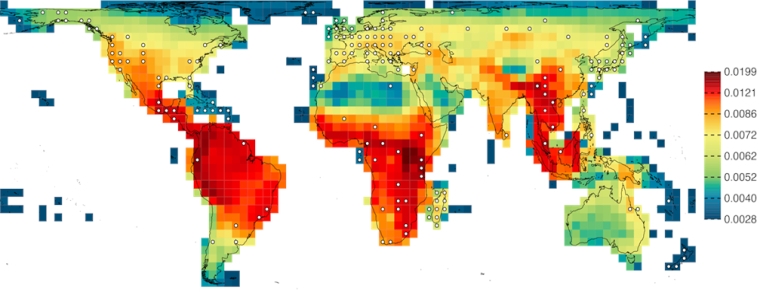CMEC maps the genetic diversity among terrestrial mammals
Research from the Center of Excellence CMEC funded by the DNRF has led to the development of models that map the global genetic diversity among terrestrial mammals. The models map genetic hotspots that, until now, have been a missing aspect in biodiversity research. The research was part of an international collaboration and was recently published in the scientific journal Nature Communications.

In order to protect life on Earth, it is necessary to have knowledge about global patterns in biodiversity – ranging from genetic diversity in species to diversity in different species and ecosystems. However, the lack of genetic sequences on a global scale has so far prohibited our ability to map the overall genetic diversity of the Earth.
An international collaboration between researchers from CMEC, which was previously funded by the DNRF, and researchers from the University of Adelaide in Australia is behind a new study that was recently published in Nature Communications. Based on data from long-standing studies and theories, the research team developed computer models that map the global genetic diversity among terrestrial mammals. The study is based, among other things, on research done at CMEC during the grant period from the DNRF between 2009-2019.
“Genetic diversity within species is a critical component of biodiversity, playing two important roles at the same time. It reflects species’ evolutionary history and defines their capacity to adapt under future environmental change. However, and despite the predictions of major biodiversity theories, the actual global distribution of genetic diversity remained, so far, a mystery,” said Spyros Theodoridis, post-doc at CMEC and lead author behind the study. He added:
“Recent collective efforts to populate public databases with genetic sequences and their localities allowed us to evaluate these theories and generate the first global maps of genetic diversity in terrestrial mammal assemblages.”
Arks of biodiversity
The study from CMEC and the University of Adelaide is based on massive amounts of genetic data on terrestrial mammals that have been evaluated and has led to theories that could explain the global distribution of genetic diversity. The research team found that regions of the world that are rich in a long evolutionary history, such as the northern Andes mountains, the Brazilian Atlantic forest, the Central American jungles, and many more, are also a kind of genetic diversity hotspot.
“The tropics, and more specifically tropical mountain regions, host large amounts of the global pool of genetic diversity. These arks of biodiversity are under a high pressure today due to climate and land-use change. The conservation of genetic diversity in these areas should be a priority in ongoing conservation efforts,” said David Nogues-Bravo, associate professor at CMEC and senior author behind the study.
Read the scientific article from CMEC in Nature Communications here
